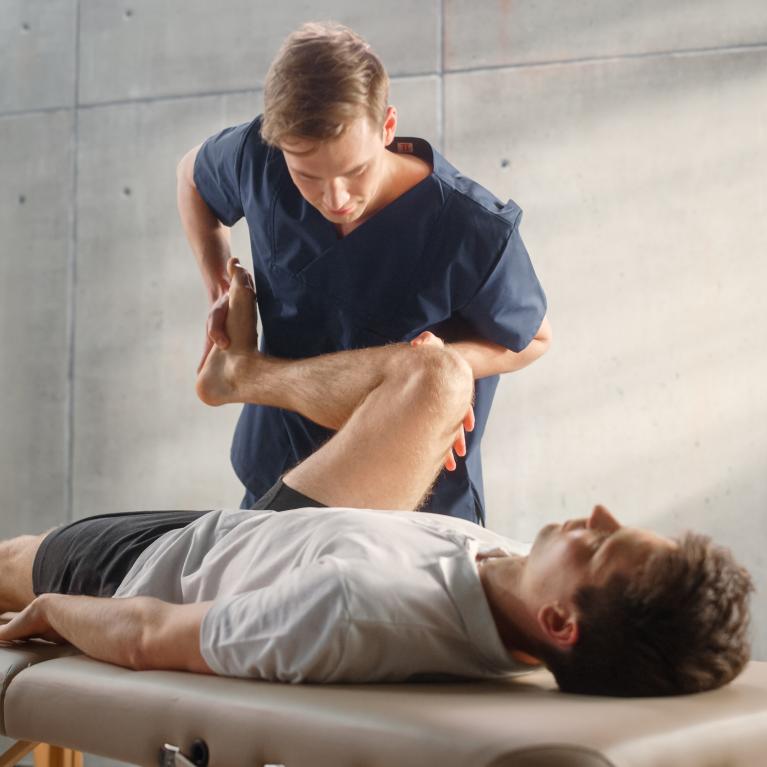
Don't wait until you've picked up an injury to see an osteopath.
It can be useful to have your movement patterns assessed as part of your prehabilitation, when you’re preparing for an event, or if you’re just looking to improve your overall performance.
After a big event, such as a marathon, an osteopath can help reduce some of the tightness and aching that runners have, and mobilise stiff joints and muscles to give their bodies a chance to reset efficiently. Though you should probably wait two to three days after an event before visiting a clinic.
“When it comes to runners, osteopaths will look at overall biomechanics and range of movement, and we also treat muscle-related sports injuries including sprains, strains, aches and pains,” says Nick Coysh, who has a BSc (Hons) in Osteopathic Medicine and runs an Osteopathy and Wellness clinic in West Sussex. In April, he’s hoping to run his first TCS London Marathon in less than four hours.
Osteopaths use a combination of techniques, including massage, stretching, joint mobilisation and gentle spinal manipulation, says Nick. They will look at where your instabilities and imbalances are, strengthening or loosening any areas that are tight.
When looking for an osteopath, Nick advises runners to look for those who specialise or have an interest in running.
How osteopathic treatment works
Osteopaths often treat overuse injuries, such as runner’s knee, initially by looking at the root cause of the problem and studying the patient’s running style. “It could be coming from other areas, rather than the knee itself,” says Nick.
“An osteopath would look at how the pelvis is set up and whether there are any biomechanical issues going on. They’d also look at the feet, whether a runner is flat-footed, which can cause pressure on the inside of the joints, or has high arches, which affects how your knees go in or out.”
Strengthening through other muscles – in the case of the knee: the glutes, core, hamstrings, calves and quads – will help and make you less prone to injury, says Nick. And he’d always check runners’ shoes, as wearing a good pair of running shoes, with decent cushioning, which aren’t worn-down, is especially important when you start to run longer distances.
Osteopaths favour muscle energy techniques, where runners push against resistance, and they will often ask runners to make lifestyle changes such as not sitting for too long at a computer, which can be detrimental to your core, or improving your posture, to reduce tightness in your hip flexors.
“Stretching techniques help the blood flow and can improve circulation, which will help the body repair itself and reduce soreness and stiffness,” says Nick, and osteopaths will complement that with massage work, and potentially ultrasound or shockwave therapy for strains and sprains.
Nick highlights the importance of drinking enough water, eating well with sufficient carbs and protein, resting, and getting a good night’s sleep when it comes to both preventing and recovering from injury. “There is a lot of research showing that we recover from injury better if we sleep well (for eight hours) consistently over time,” he says. “It’s something people don’t always consider.”
More than anything, when it comes to running he says osteopathy is about looking at the whole and educating the person as much as treating them, learning how to balance rest with exercise, encouraging them to listen to their body and emphasising the body’s resilience when it comes to recovery. “It’s your own medicine chest and if you give it a chance to adapt and heal, it will,” he says.
Written by Sam Haddad. Sam is a freelance journalist based in Brighton, she's been writing about sport and the outdoors for over 20 years.